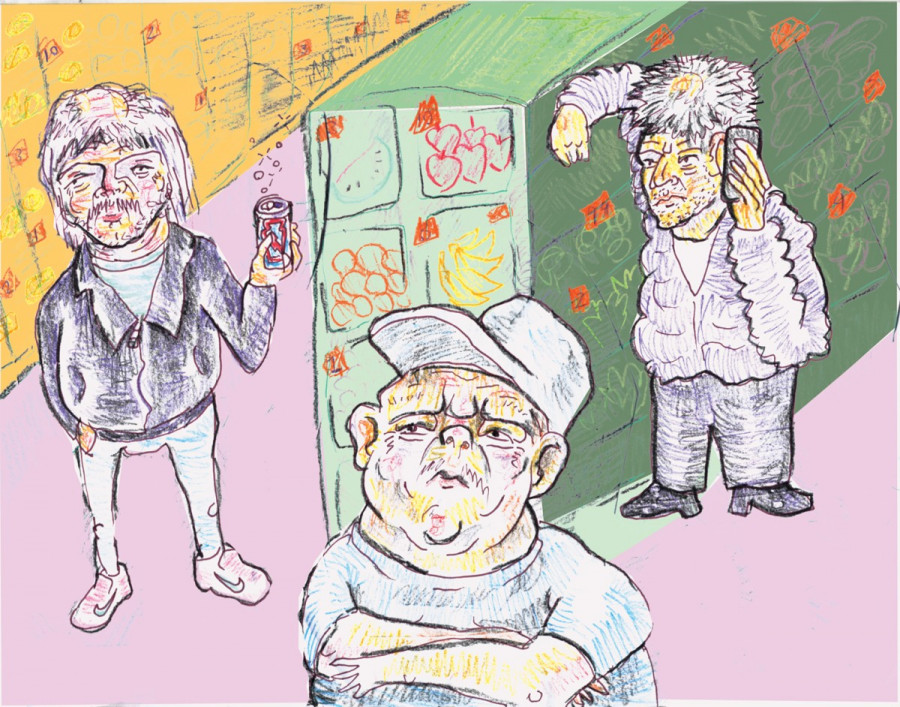Chomp Some Cheap Chow
Canada’s Rising Food Prices Need to Chill
The other day at the grocery store, I accidentally paid $10 for green grapes.
While I say “accidentally” because I wasn’t paying attention at checkout, what I really mean to say is that green grapes shouldn’t ring through at ten fucking dollars.
Fruit and vegetable prices are expected to increase by as much as 4.5 per cent in 2016 according to the University of Guelph Food Institute. The increase comes after an additional five per cent increase in prices last year.
The cost of produce is absurd, especially for young people pursuing their education. Of course the sliding Canadian dollar is the biggest culprit of this, however, the CBC also attributes flooding—and consequential produce shortages—in California and Mexico caused by the El Niño hurricane as key factors for our rising grocery bills.
Society tells us that students will always find it challenging to keep the fridge stocked, because it’s like, part of the post-secondary experience, y’know? That being said, everyone is feeling the effects of food cost this time around, as prices soar and the value of our less-than-shiny loonie drops to record-breaking extremes.
With that in mind, I set out to find some solid alternatives to the major league grocery stores who are jacking up the prices. This ain’t gonna be your typical Sunday trip to the market—think of it more like a cheap food scavenger hunt that will send you all over the city.
Segal’s, the well-known Plateau Mont-Royal staple grocery store, is a little dirty, granted, but it offers relatively low prices for decent quality produce. You can score all the basics—tomato, lettuce, cucumbers and what have you—for less than you would usually pay at a brand-name grocery store.
You can also pick up specialty foods for significantly less than most places. I’ve nabbed $3 Yves products and $0.99 chocolate cream cheeses (spoiler alert, don’t go for the chocolatey cream cheese). Segal’s is sort of an experience, or an acquired taste. But, the nostalgia-inducing ambiance of this local grocer can’t be beat.
The Good Food Box is a gem. This collective purchasing initiative says on their website that it is “dedicated to buying first quality, fresh and affordable produce.”
For $7, you can pick up a box of produce to feed one person. The program offers more than 115 pickup locations in 28 Montreal neighbourhoods. The boxes are seasonal, and often include items you wouldn’t normally buy in stores, like wild leeks. The out-of-the-ordinary veggies will hopefully inspire buyers to cook recipes out of their comfort zones.
You can place an order a box by phone, after you pinpoint which pick-up location is good for you, or give them a Google and check out their site.
Asian grocers are great for scouting inexpensive, interesting food items you might not find elsewhere. For example, Banzai $1.99 in NDG is a great spot for picking up mushrooms, bok choy, broccoli, ramen, seafood and meat alternatives—for $1.99, you can take home a tub of tofu.
Other great shops include Kim Phat, which has three locations, and Prime Minister Justin Trudeau’s approval.
Student food initiatives like the People’s Potato or The Hive Café Solidarity Co-op should play a big role in your lunchtime routine if you’re looking to both eat healthy and save. If you’ve been living under a rock, or haven’t had a chance to visit either of The Hive’s two awesome locations, you’re missing out.
The Hive’s cafes boast affordable snacks like the to-die-for “brekkie burritos” and grilled cheeses, which are both under $3.50. Protip: get the membership to get discounts on all the great eats.
Meanwhile, Monday through Friday, both People’s Potato in the Hall Building and The Hive at Loyola Campus offer free vegan (and often gluten-free) lunches to students and staff around 12:30 p.m.—just be sure to bring your own container.


_600_832_s.png)




